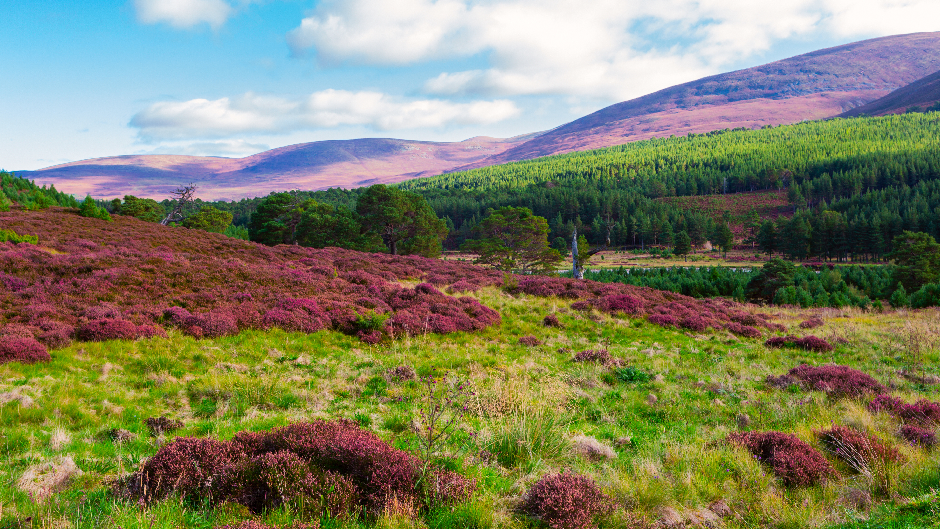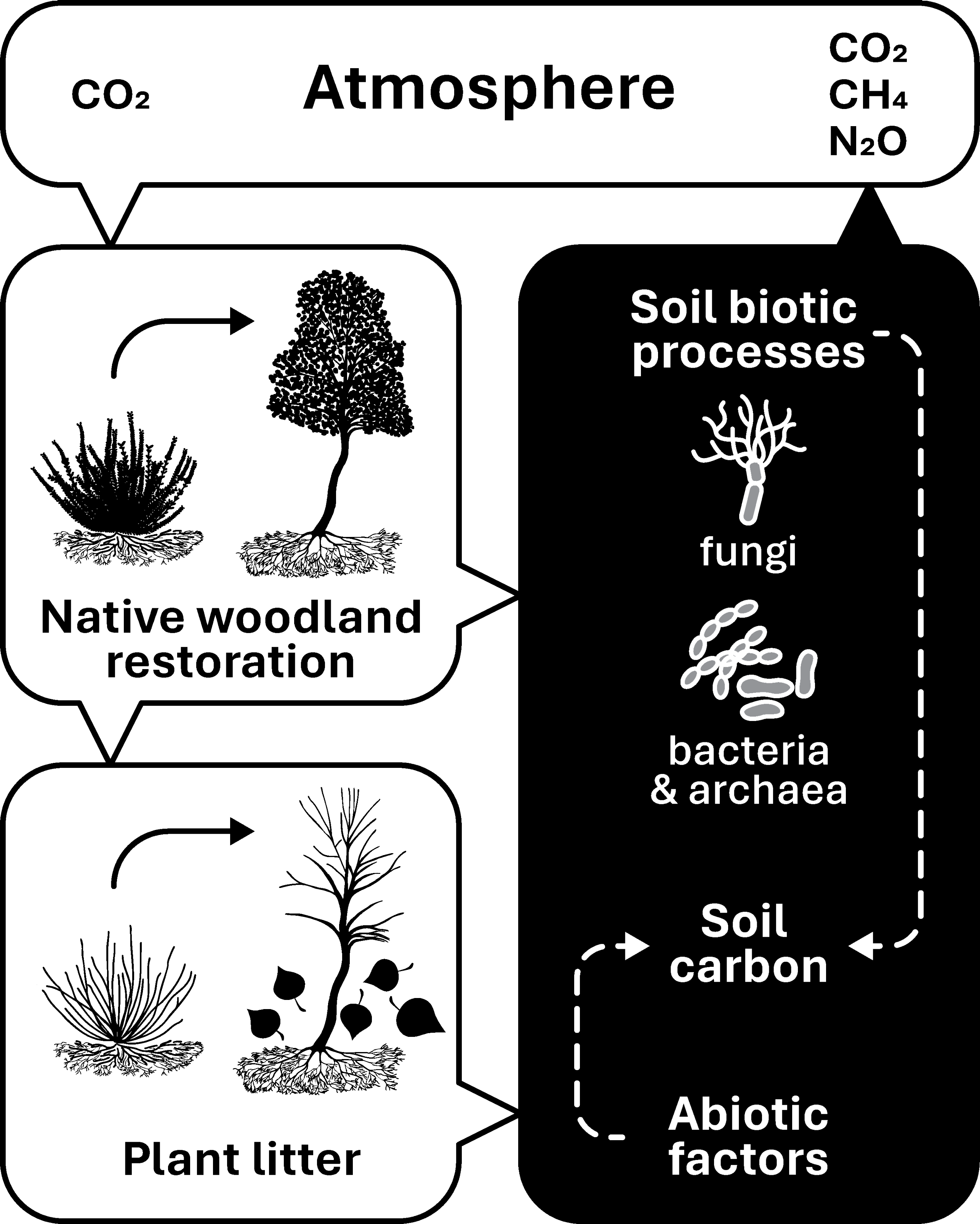SPROUT – Soil Processes in Restored Upland Treescapes
The organic-rich soils of Scotland’s uplands store vast amounts of carbon. Climate mitigation policies promote native woodland restoration on these organic soils. This might have unintended consequences through impacts on soil biotic processes affecting greenhouse gas (GHG) emissions.

Upland regions of Scotland have one of the most extensive organic-rich soils in Europe and thereby store huge amounts of carbon. Growing interest in forest restoration to mitigate climate change by sequestering carbon in these soils has recently driven an increase in tree-planting initiatives in these landscapes.
This project will explore the effect of afforestation on these soils. However, the impact of this woodland establishment on soil biota and structure, and consequently on soil greenhouse gas fluxes are largely unknown. This could potentially undermine the benefits of biomass accumulation in aboveground woody vegetation. We will take a holistic approach and assess (a)biotic drivers of greenhouse gas fluxes and seasonality, as well as understanding how vegetation change through woodland restoration affects carbon and nitrogen cycling and subsequent emissions from soils. We measure emissions of carbon dioxide (CO₂), methane (CH4), and nitrous oxide (N₂O) from heathland to increasingly mature native woodland, and track the changing composition of soil microbial communities. Our experiments will reveal how the changing composition of leaf litter and root exudates affect bacterial and fungal activities that drive CO₂, CH4 and N₂O production.
Policy and management relevance
Our research informs whether woodland restoration on organic-rich soils delivers the expected climate mitigation benefits.


SPROUT - Soil Processes in Restored Upland Treescapes (2022-2028), is a collaboration between ETH Zürich, external page James Hutton Institute and external page University of Edinburgh.
Researchers
Erika Soans
PhD Student
Go to profile
Alexandra Werner
PhD Student
Go to profile